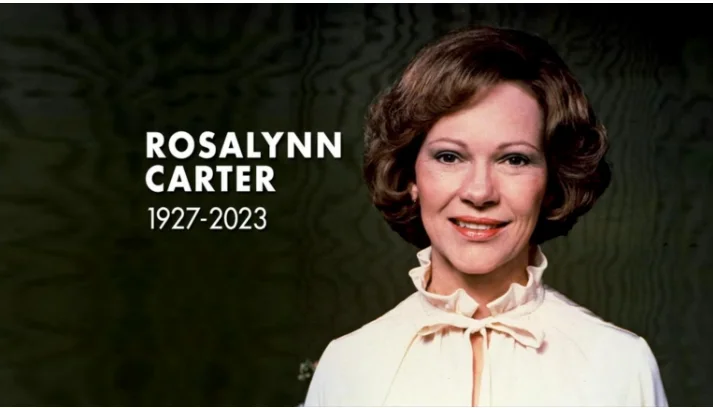Hurricane Katrina Death Toll – A Devastating Natural Disaster
Hurricane Katrina was one of the most catastrophic hurricanes in the history of the United States, leaving a trail of destruction that had far-reaching impacts on the Gulf Coast and particularly on the city of New Orleans.
When Was Hurricane Katrina?
Hurricane Katrina struck in late August 2005. The storm formed over the Bahamas on August 23, 2005, and rapidly intensified as it moved across the Gulf of Mexico.
Hurricane Katrina Date and Landfall
The most significant landfall occurred on August 29, 2005. Katrina first made landfall in Florida as a Category 1 hurricane. Still, she gained strength in the warm waters of the Gulf of Mexico, eventually making a second landfall along the Gulf Coast as a powerful Category 3 hurricane.
Where Did Hurricane Katrina Hit?
Hurricane Katrina primarily affected the Gulf Coast of the United States, including Louisiana, Mississippi, and Alabama. The city of New Orleans was particularly hard hit due to the failure of the levee system, which led to catastrophic flooding.
Hurricane Katrina in New Orleans
New Orleans experienced unprecedented flooding after the storm surge caused several levees to fail, submerging approximately 80% of the city. The failure of the levee system was one of the most devastating aspects of the hurricane, resulting in widespread destruction, displacement, and a high number of fatalities.
Hurricane Katrina Deaths
The human toll of Hurricane Katrina was immense, with over 1,800 people losing their lives due to the storm and its aftermath. The majority of the deaths occurred in Louisiana, particularly in New Orleans, where the flooding was most severe.
Hurricane Katrina Damage
The damage caused by Hurricane Katrina was extensive. The estimated cost of the damage was over $125 billion, making it one of the costliest natural disasters in U.S. history. Entire communities were destroyed, and infrastructure across the Gulf Coast was severely damaged. In New Orleans, the flooding devastated homes, businesses, and public services, leading to a prolonged recovery process.
Hurricane Katrina Path
Katrina followed a destructive path across the Gulf Coast. After forming over the Bahamas, it moved across southern Florida before intensifying in the Gulf of Mexico. It then made landfall near Buras-Triumph, Louisiana, and moved inland across Mississippi and Alabama, eventually weakening as it traveled further north.
What Category Was Hurricane Katrina?
Hurricane Katrina was a Category 5 hurricane at its peak while over the Gulf of Mexico, with sustained winds of up to 175 mph. However, by the time it made its final landfall along the Gulf Coast, it had weakened to a Category 3 hurricane with winds of around 125 mph.
Hurricane Katrina Facts
- Formation: Katrina began as a tropical depression over the Bahamas on August 23, 2005.
- Peak Strength: The hurricane reached Category 5 status on August 28, 2005, over the Gulf of Mexico.
- Levee Failures: The failure of the levee system in New Orleans led to catastrophic flooding, one of the primary causes of the high death toll.
- Displacement: The hurricane displaced over a million people, many of whom could not return to their homes for weeks or even months.
- Economic Impact: In addition to the direct damage costs, Katrina caused significant economic disruption, particularly in the oil and gas industries, which are vital to the Gulf Coast economy.
What Year Was Hurricane Katrina?
Hurricane Katrina occurred in the year 2005. The storm’s devastating effects and the subsequent failures in the emergency response highlighted significant challenges in disaster preparedness and management in the United States.
Hurricane Katrina remains a stark reminder of the power of nature and the importance of resilient infrastructure and disaster response planning.

Before and After Hurricane Katrina: A Tale of Devastation and Resilience
Hurricane Katrina is a landmark event in the history of the United States, remembered for its profound impact on the Gulf Coast, particularly New Orleans. The period before and after the hurricane highlights the stark contrasts in the region’s landscape, infrastructure, and the lives of those who lived through it.
Before Hurricane Katrina
Before Hurricane Katrina, New Orleans was known for its vibrant culture, rich history, and unique architecture. The city, built largely below sea level, relied heavily on an intricate system of levees and pumps to protect against flooding. Despite its charm and vitality, New Orleans had underlying vulnerabilities, particularly in its flood protection infrastructure. Many of these systems were aging and not designed to withstand a storm of Katrina’s magnitude. The city’s population included many low-income residents, some of whom lived in areas most at risk from flooding. Life in the Gulf Coast region was relatively normal, with the bustling tourism industry, thriving communities, and a way of life deeply connected to the waters that would soon bring devastation.
During Hurricane Katrina: “I Survived Hurricane Katrina, 2005”
As Hurricane Katrina made landfall on August 29, 2005, the Gulf Coast was unprepared for the sheer scale of destruction that followed. The levees that protected New Orleans failed, and floodwaters engulfed the city, displacing thousands and leaving many stranded on rooftops or in attics. For those who lived through the storm, the experience was harrowing. Survivors recount the terror of rising waters, the desperate search for higher ground, and the uncertainty of when or if help would arrive. The phrase “I survived Hurricane Katrina, 2005” became a testament to the resilience of those who endured one of the worst natural disasters in U.S. history.
The Aftermath of Hurricane Katrina
The aftermath of Hurricane Katrina was marked by chaos, destruction, and a slow, painful recovery. In New Orleans, the floodwaters took weeks to recede, leaving behind a devastated city. Homes were destroyed, businesses were lost, and entire neighborhoods were left in ruins. The Superdome and the Convention Center, which served as shelters of last resort, were overwhelmed by the number of people seeking refuge, and conditions inside were dire. The federal and state response was widely criticized for its inadequacy and delays, leaving many residents feeling abandoned in their time of greatest need. The physical and emotional scars of Katrina lingered long after the waters receded.
“I Survived Hurricane Katrina” Stories
Survivors of Hurricane Katrina have shared their stories of endurance and survival. These accounts are filled with tales of heroism, community spirit, and the will to overcome unimaginable odds. Books, documentaries, and interviews have captured the experiences of those who lived through the storm, offering insights into the human spirit’s ability to persevere even in the face of overwhelming disaster. The phrase “I survived Hurricane Katrina” has come to symbolize not just survival but the courage and strength of those who faced the storm and its aftermath head-on.
Where Was Hurricane Katrina?
Hurricane Katrina primarily impacted the Gulf Coast of the United States, including Louisiana, Mississippi, Alabama, and Florida. The storm caused the most significant damage in New Orleans, Louisiana, where the failure of the levee system led to catastrophic flooding.
New Orleans and Hurricane Katrina
New Orleans bore the brunt of Hurricane Katrina’s fury. The city’s unique geography, with much of it lying below sea level, made it particularly vulnerable to the storm’s storm surge and the subsequent levee failures. The flooding that ensued submerged 80% of the city, turning streets into canals and neighborhoods into wastelands. The disaster exposed deep social and economic inequalities, as the poorest and most vulnerable populations were disproportionately affected by the storm and its aftermath. The cultural fabric of New Orleans was deeply scarred, but the city’s spirit of resilience and determination eventually led to a slow but steady recovery.
In the years following the disaster, New Orleans has made significant strides in rebuilding and revitalizing its communities. However, the memory of Hurricane Katrina remains a defining chapter in the city’s history, a reminder of the power of nature and the importance of preparedness and resilience.










